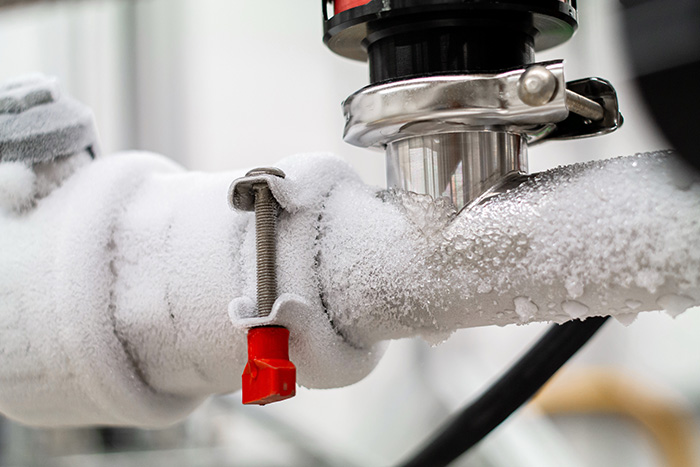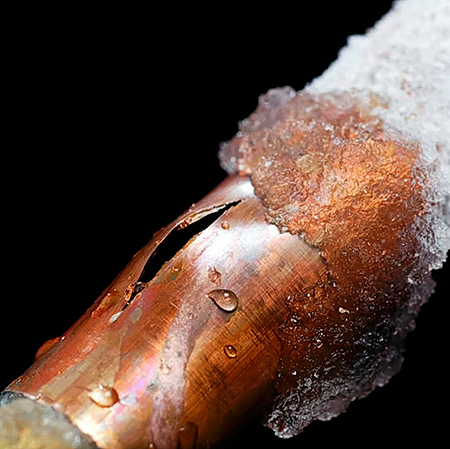How do you feel on the subject of How can I fix an air conditioner’s frozen pipe??

Intro
Uncovering that your a/c pipe is frozen can be concerning, specifically during warm summer season when you depend on your a/c unit one of the most. Understanding what to do in such a scenario is essential to stop more damages to your air conditioning system and guarantee your comfort inside.
Comprehending the Causes
Several aspects can contribute to the cold of an air conditioning pipeline. Understanding these reasons can aid you deal with the concern efficiently.
Absence of Airflow
One common root cause of an icy air conditioning pipeline is inadequate airflow. When the air flow over the evaporator coil is limited, it can cause the coil to drop below freezing temperature level, bring about ice formation on the pipe.
Low Refrigerant Levels
Inadequate refrigerant levels in your air conditioning system can likewise lead to an icy pipeline. Reduced cooling agent degrees can create the pressure in the system to drop, resulting in the freezing of moisture on the evaporator coil.
Cold Weather Conditions
In colder climates, freezing temperatures outside can contribute to the freezing of air conditioning pipes. If your AC unit is not effectively shielded or if there are leakages in the ductwork, chilly air can infiltrate the system, causing the pipeline to ice up.
Dirty Air Filters
Unclean or clogged up air filters can limit air flow in your air conditioner system, causing various problems, including a frozen pipeline. It's necessary to change or clean your air filterings system consistently to make sure correct airflow and stop ice build-up.
Signs of a Frozen Air Conditioning Pipe
Acknowledging the indications of an icy air conditioner pipe is essential for timely activity.
Lowered Airflow
If you see a considerable reduction in air flow from your vents, it can show an icy pipeline.
Ice Buildup on the Pipe
Visible ice accumulation on the refrigerant line or the evaporator coil is a clear indication of an icy a/c pipe.
Unusual Sounds from the Unit
Unusual audios, such as hissing or gurgling, originating from your air conditioning unit can signal that there's ice existing on the pipeline.
Immediate Actions to Take
When confronted with a frozen AC pipeline, it's important to act promptly to avoid additional damage to your cooling system.
Shutting off the air conditioning
The initial step is to switch off your air conditioning system to avoid the system from running and intensifying the issue.
Looking for Blockages
Check the location around the interior unit for any kind of obstructions that might be obstructing airflow, such as furnishings or curtains.
Defrosting the Pipe
You can utilize gentle methods like putting towels soaked in cozy water around the frozen pipe to aid thaw it slowly.
Safety nets
Taking preventive measures can aid avoid future incidents of a frozen air conditioner pipe.
Routine Maintenance Checks
Set up regular upkeep checks with an expert HVAC professional to guarantee that your AC system is running effectively.
Altering Air Filters
On a regular basis replace or clean your air filters to prevent airflow limitations and keep optimal efficiency.
Shielding Exposed Pipes
If your AC pipes are exposed to cool temperature levels, think about insulating them to stop freezing throughout winter season.
Seeking Professional Help
If DIY approaches fail to resolve the problem or if you're unsure regarding how to proceed, it's ideal to seek help from a qualified HVAC service technician.
When DIY Methods Fail
If your efforts to thaw the pipe or address other problems are unsuccessful, it's time to hire a professional.
Relevance of Hiring a Professional HVAC Technician
A licensed HVAC technician has the expertise and devices necessary to identify and repair concerns with your air conditioning system securely and efficiently.
Verdict
Handling an icy AC pipe can be a frustrating experience, however recognizing how to react can aid minimize damage and bring back convenience to your home. By understanding the causes, acknowledging the indications, and taking prompt action, you can efficiently attend to the problem and protect against future events.
What to Do If Your AC Line Is Frozen
Make Sure All Supply and Return Air Vents Are Open
If you notice problems with airflow, the first thing you should do is check your supply and return vents. Supply vents distribute clean, conditioned air throughout your home. As this air becomes stale, it’s pulled into the return vent, where it’s reconditioned before being sent back out through the supply vent.
When these vents are closed, air won’t flow in the home. Before examining your AC, check the vents in every room and ensure they’re all open.
Check for a Dirty Air Filter
Another possible cause of limited airflow is a dirty air filter. Your air conditioner’s filters catch elements you don’t want to breathe in, such as dirt and dust. Over time, filters can become clogged, ultimately blocking air from flowing in and out. The lack of airflow can then cause the entire coil to freeze and will completely restrict any air from moving through it. The AC may need to be powered off for one to two days to allow the coil to thaw after replacing the filter to allow proper functioning of the unit. This debris can also accumulate on your AC’s evaporator coil, requiring a more serious repair. In general, air filters should be cleaned regularly (about every two weeks).
Assess Your Outdoor Unit
In addition to checking your AC, assessing the outdoor unit is a good idea. Also known as the condensing unit, it works with your interior unit to release heat outside. An issue with the outdoor unit can result in rising internal temperatures.
Overgrown Shrubs or Clogged Leaves
From leaves and twigs to shrubs and debris, there’s no shortage of outdoor elements that can accumulate around your condensing unit. When these elements get lodged inside the unit, they can block airflow. Fortunately, removing the blockage can solve the problem.
Sounds of a Broken Fan
Shrubs and leaves aren’t the only things that can impede your outdoor unit’s airflow. If the fan is broken, the unit won’t be able to properly get rid of heat — which means the internal temperature won’t go down. First, make sure the fan is spinning. If it is, check for the following sounds of a broken fan:
Buzzing Rattling Screeching Hissing Clicking Preventative Measures
Nobody wants to deal with a frozen AC line. In addition to causing problems with your air conditioner, they require professional repairs. On the bright side, there are preventative measures you can take to help ensure this issue doesn’t arise in the first place.
https://www.coopergreenteam.com/blog/what-to-do-if-ac-line-frozen

I discovered that entry about What Causes AC Pipes To Freeze? when doing a lookup on the search engines. Sharing is good. Helping others is fun. Thank you for your time. Kindly check up our site back soon.
Schedule Service